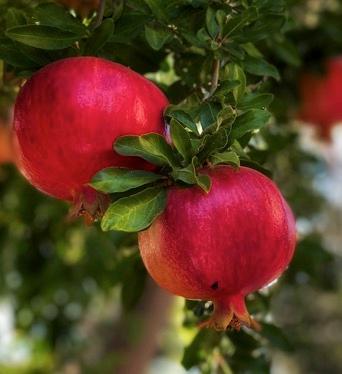Pomegranate
-
Scientific NamePunica granatum
-
Special ConsiderationsPomegranates can be trained as a tree but grow naturally as a bush made of a tall, arching thicket of canes. If grown as a bush, it is best to keep the diameter of the base to no more than 18-24 inches to make pruning easier and the fruit more accessible.
 Photo: Zeynep Aciktepe/Unsplash
Photo: Zeynep Aciktepe/UnsplashPomegranates are self-fertile, but two or more plants together tends to improve fruit set.
-
Fruit grows on:
Old wood (on spurs) and new wood
-
What to Prune in Winter
Remove dead, diseased or damaged canes.
Remove crossing canes.
Remove canes that expand the base beyond the desired diameter.
Remove suckers that grow from the roots.
Remove outer canes that have sagged close to the ground.
Remove weaker inner canes, both to open the center to sunlight and to ensure that fruit will form on strong canes. However, be sure to keep some inner canes to take the place of older canes, because pomegranate fruit spurs produce for only about three to four years.
-
What to Prune in Summer
Unless necessary to address excessive or dysfunctional growth, summer pruning generally is not performed, because much of the fruit forms at the tips of the branches.

